Quick Summary
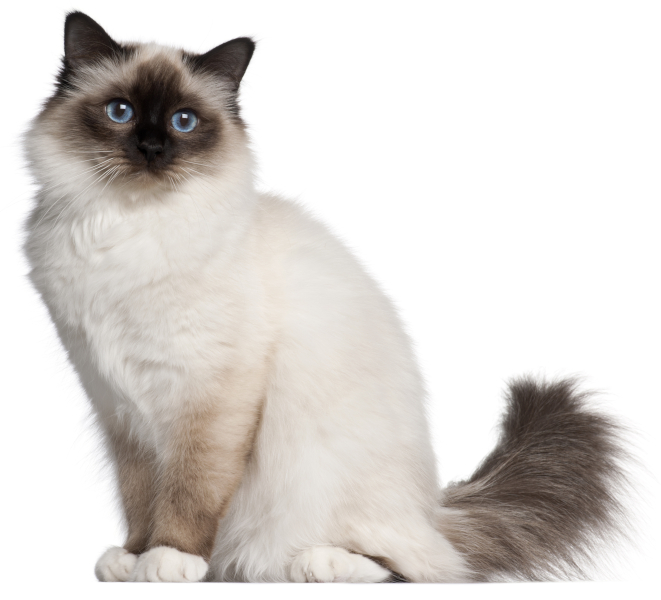
Click here for Price and Turnaround Time
Phenotype: Birman cats have clearly defined white feet ("gloves") as part of their breed standard.
Mode of Inheritance: Autosomal recessive
Alleles: N = no Birman gloving, G = Birman gloving
Breeds appropriate for testing: Birman
Explanation of Results:
- Cats with N/N genotype will not have the Birman gloving pattern and cannot transmit this gloving pattern variant to their offspring.
- Cats with N/G genotype will not have the Birman gloving pattern, but are carriers. They will transmit this gloving pattern variant to 50% of their offspring. Matings between two carriers of Birman gloving are predicted to produce 25% kittens with the Birman gloving pattern.
- Cats with G/G genotype will have the Birman gloving pattern and will transmit the Birman gloving variant to all of their offspring.
Cat Coat Color + White Gloves (Birmans) Panel
$57 per animal
Birman Coat Color Panel (Bengal Coat Color + White Gloves)
$57 per animal
Cat DNA tests are carried out using cells brushed from your cat's cheeks and gums using household cotton swabs.
The cat DNA submission form with instructions and a place to tape the cotton swabs is sent to you via email after you place an order, and can be printed from your home computer. DNA test kits are no longer mailed.
Instructions
Step-By-Step:
1.
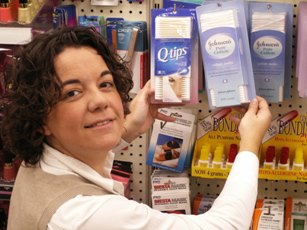 Purchase regular household cotton swabs for cat DNA collection (the cotton swabs can be purchased at a pharmacy or drug store)
Purchase regular household cotton swabs for cat DNA collection (the cotton swabs can be purchased at a pharmacy or drug store)
2.
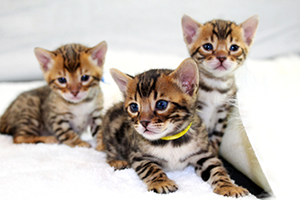
Make sure the cat has not had anything to eat or drink for at least 1 hour prior to collecting sample.
When swabbing kittens, isolate each kitten from the mother, littermates and any shared toys for 1 hour prior to swabbing. Kittens should not have nursed or eaten for 1 hour prior to collecting sample.
If collecting samples from more than one cat, make sure to sample one cat at a time and wash your hands before swabbing another cat.
3.
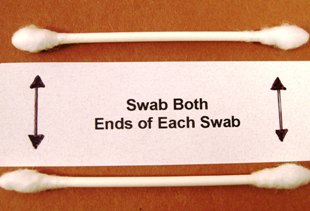 Use both ends of the two cotton swabs for a total of four swabs.
Use both ends of the two cotton swabs for a total of four swabs.
4.
Place the cotton head of the swab between the cat’s gums and cheek and rub or rotate the swab back and forth for 15 seconds. Repeat with each cotton swab head, for a total of 4 swabs. We recommend swabbing a different area of the gums with each swab head.
5.
Wave the swab in the air for 10-15 seconds to air dry it before attaching it to the submission form.
6.
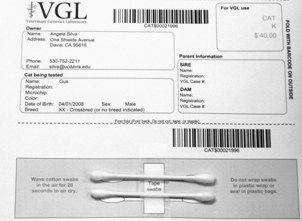 After swabbing the cheek and gums, tape the cotton swabs to the bar-coded submission form printed from your MyVGL account.
After swabbing the cheek and gums, tape the cotton swabs to the bar-coded submission form printed from your MyVGL account.
ATTENTION:
- Do not collect saliva/drool – the key to obtaining a good sample is getting cheek cells on the swab.
- Do not rub swab on the cat’s tongue or teeth – this will result in poor quality sample.
- Do not collect a sample from a kitten that has recently nursed – the mother’s genetic material can rub off on the kitten’s mouth and contaminate the sample.
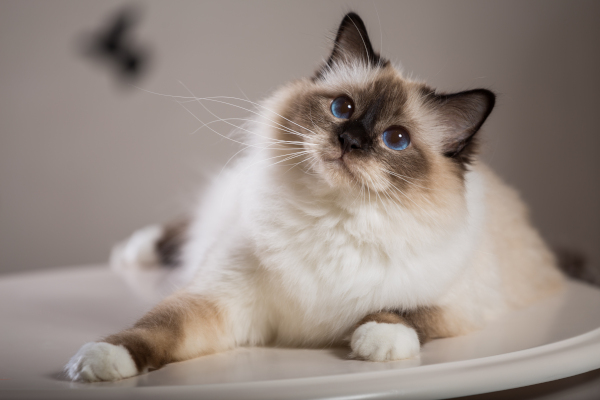
Birman cats must have clearly defined white feet as part of their breed standard. Research by Dr. Barbara Gandolfi in the Lyons Feline Genetics Laboratory at University of California, Davis identified a variant in the KIT gene (c.1035-1036delGCinsTG) that is associated with the gloving pattern characteristic of Birman cats. Gloving is inherited as an autosomal recessive trait, thus a cat must have two copies of the mutation in order to have the gloved white feet. This mutation is virtually fixed in Birman cats, implying that all Birmans must have two copies of it. The variant is found at lower frequencies in other cats such as Ragdoll, Egyptian Mau, Exotic Shorthair, Maine Coon, Manx, Seychellois, Siamese, Siberian, Sphynx and Turkish Van, but is not associated with gloving in breeds other than Birmans.
Purebred Birmans typically have two copies of the variant, which can be verified by means of a genetic test. A 2022 population study including 174 Birman cats showed an allele frequency of 95.6%, with 6.9% (12/174) of cats being heterozygous N/G. Testing for the Birman gloving pattern mutation in Birman cats can assist owners in understanding and verifying their animal's genetic makeup.
